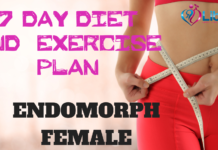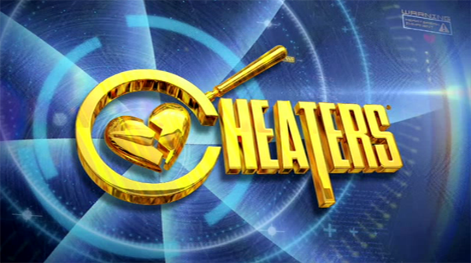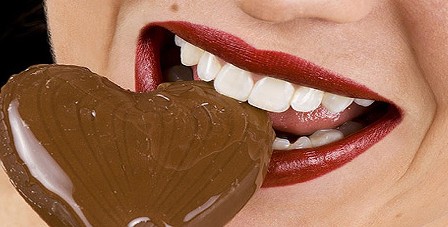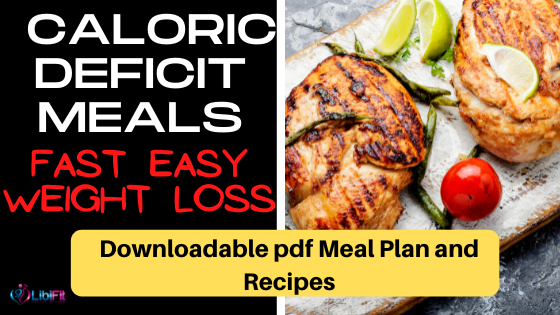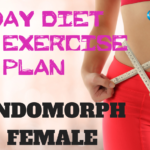Caloric deficit meals are an indispensable part of any weight loss journey. Your weight loss goals will become more realistic if you follow a caloric deficit meal plan. Remember, caloric deficit meals are synonymous with fat loss, healthy cooking healthy and a healthy lifestyle healthy.
This guide will delve into the specific ways you can prepare tasty caloric deficit meals. Our simple caloric deficit meal plan comes complete with healthy recipes healthy. We’ll also cover how these caloric deficit meals work and how they can help you start healthy eating healthy. So, be sure to keep reading.
What is a Caloric Deficit?
Before we diet delve into the specific ways to prepare a meal plan and cooking healthy cooking, we must first discuss what we mean when we talk about caloric deficit meals. That said, it would be impossible to do so without also tackling the matter of calories and calorie expenditure.
Put simply, calories are units of energy. You get these from the food you eat and the beverages you drink. You burn these calories as you go about your day – this is called calorie expenditure. There are three ways your body burns these calories:
- Activity energy expenditure – This is probably the most well-known way to burn calories. All calories burned through various forms of physical activity are categorized under active energy expenditure. This includes everything from exercise-related activities like jogging and lifting weights to non-exercise-related activities like using your computer, doing household chores, etc.
- Resting energy expenditure – While you may not realize it, your body is burning calories even if you are idle – albeit at a dramatically reduced rate. This is because your body still needs to burn calories to perform bodily functions like breathing and blood circulation.
- Thermic effect of food – Another way your body burns calories is by digesting, absorbing, and metabolizing the food that you consume.
If you wish to achieve a calorie deficit, then you will need to consume fewer calories than you burn. Take note that most people have a calorie surplus. This means that they are consuming more calories than they are burning. Put simply, if you wish to lose weight, then you will need to follow a caloric deficit meal plan.
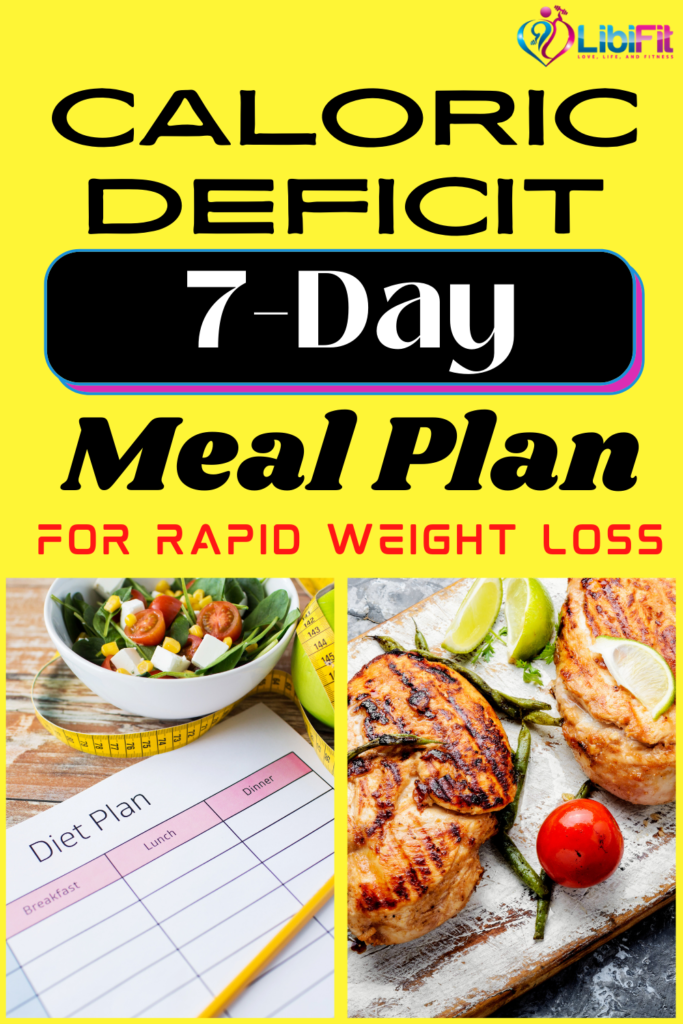
How Does a Calorie Deficit Work?
It is clear now that a caloric deficit meal plan is indispensable if you are planning on losing weight. This is because regularly consuming caloric deficit meals is the best way to ensure that your number of calories consumed is smaller than the number of calories you burned.
Everyone needs to burn calories to ensure that their body can perform its vital functions. That said, it is worth noting that the specific number of calories a person needs each day will inevitably vary depending on several factors including
- Age – It is no secret that our metabolism slows down as we age. This means that the number of calories your body can burn will also decrease over time. This will become more noticeable as you approach middle age.
- Height and Weight – Height and weight will inevitably affect the number of calories your body needs. The number will increase the taller and heavier you are.
- Sex – Men and women have different metabolic processes affected by hormones and other chemical processes. So, it should come as no surprise that the number of calories they need to burn will also be different. Additionally, because men have a more robust build (taller and heavier), they generally need more calories daily.
- Body composition – When we speak of body composition, your body is split into two categories: fat mass and lean mass. This plays a major role in terms of your metabolic rate – how fast your body can burn calories. By decreasing your fat levels, you effectively give your body a major boost. This is because the leaner you are, the faster your body burns calories. Here is a great article all about body composition.
- Physical activity levels – Take note that your physical activity is an important factor as it affects your activity energy expenditure. For instance, if you are living a sedentary lifestyle, then you might find yourself having a harder time losing weight solely through caloric deficit meals. Instead, you should also start incorporating a simple exercise routine to go along with your caloric deficit meal plan. 30 minutes of physical activity should be enough, especially for beginners.
Again, everybody burns calories. However, the rate at which you burn it and the number of calories your body needs will be affected by these factors. Needless to say, you need to take note of these different aspects if you wish to come up with a caloric deficit meal plan that fits your needs.
What are Calorie Deficit Foods?
There is a common misconception that clean eating and caloric deficit meals mean sticking to a bland meal plan. It should be made explicitly clear that there is no shortage of perfectly delicious foods that are also low in calories.
Below are some of the foods you must include in your caloric deficit meal plan. Aside from being staples of a low calorie meal, we also did our best to choose specific foods that are rich in vitamins and nutrients. This way, you can rest easy knowing that you can come up with caloric deficit and healthy meal plans.
Broccoli – Broccoli is perhaps one of the most nutritious vegetables around. A cup or 91 grams contains a mere 31 calories while also giving you your entire vitamin C requirement for the day. Moreover, broccoli is also said to contain anti-cancer properties. Needless to say, it is a worthy addition to any healthy meal.
- Brussels Sprouts – These vegetables are natural nutritional powerhouses. You can eat them raw or cooked. A single cup contains 38 calories. Like Broccoli, they also effectively prevent DNA damage thanks to their high vitamin C content.
- Carrots – Carrots are another worthy addition to your weight loss meal. This is because a single-cup serving of carrots (128 grams) only contains 53 calories. It also has 4 times the daily requirement for vitamin A as well as a host of other nutrients including beta-carotene.
- Cauliflower – Cauliflowers are hard to miss with their distinctive white head inside green leaves. Incredibly filling and tasty, they have become the go-to replacement for grains and vegetables with high levels of carbohydrates. To be more precise, a 100-gram cup of cauliflower is said to contain a measly 25 calories. If you are trying a low calorie diet, then you simply must look for ways to incorporate this vegetable into your meal plans meal.
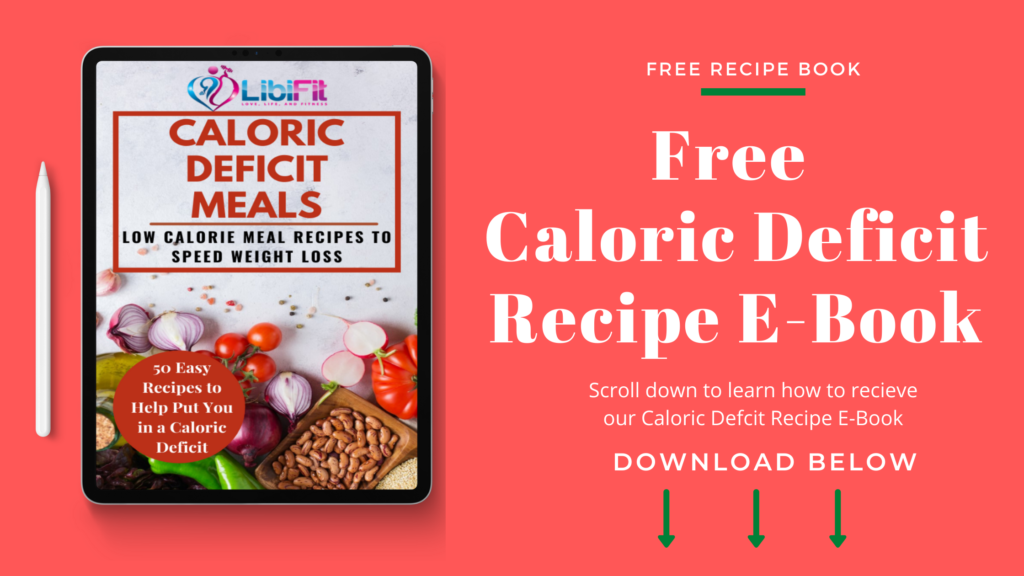
- Cabbage – This is another staple in salad recipes. If you want to keep your meal plans healthy then you must find ways to include Cabbage. This is because it contains 22 calories per single-cup serving.
- Celery – Perhaps one of the most iconic healthy foods around, celery has become synonymous with weight loss. If you are trying to come up with a tasty and healthy low calorie meal, then celery is your best bet. This is because it only has 18 calories per 110-gram serving. This is made possible by its high water content and its long, green stalks that contain great amounts of insoluble fiber that the body can’t absorb – drastically reducing its calorie count per serving. Using celery in caloric deficit meals is a great idea.
- Kale – Another superfood that has skyrocketed in popularity in recent years, Kale has certainly earned its acclaim. This leafy green vegetable boasts impressive nutritional benefits being one of the best sources of vitamin K in the culinary world. To put things in perspective, a single 67-gram cup of kale has around seven times the daily dietary requirement vitamin K. Even more impressive, a cup of Kale only contains 34 calories.
- Watermelon – Delicious and refreshing, it should come as no surprise that this is our favorite addition to this list. As you would expect from its name, watermelon has an incredibly high water content making it a very hydrating fruit. This would also explain why a 152-gram cup of diced watermelon only contains 46 calories. Even more impressive, it is also incredibly rich in different kinds of vitamins and nutrients, especially vitamin C.
- Nonfat Plain Greek Yogurt – Defiantly rich and creamy, Greek yogurts are proof that eating healthy doesn’t need to be boring. Its distinctively decadent flavors make it hard to believe that a 100-gram cup only contains 56 calories. In addition to this, Greek yogurt also serves as an excellent source of protein, zinc, calcium, and potassium as well as vitamins B12 and B6.
- Broths – Broths are criminally underutilized in most diet plans. This is a shame considering that they can are incredibly versatile and surprisingly easy to make. By simply leaving your chicken, beef, or vegetables to boil, you get a myriad of culinary possibilities. You can use these as a base for your soups and stews or you can also opt to drink them directly. A 240ml cup of broth usually has no more than 7–12 calories.
These are just a few of the foods that you can include in your caloric deficit meals. As a general rule, incorporating these low-calorie foods into your caloric deficit meal plan serves as a convenient way to achieve your fitness goals.
Here is a great video with more low to zero calorie foods.
How to Calculate Caloric Deficit
Use this calculator to determine the optimal number of calories to consume each day to put you in a caloric deficit to facilitate weight loss.
Grab a downloadable pdf 7-day 1200 calorie meal plan as well as easy low calorie meals by entering your email address in the form below.
How Can I Easily Create a Caloric Deficit?
Creating a caloric deficit to lose weight shouldn’t be that much of a problem if you are using the right approach. Presented below are some of the tips that might make your road to fitness that much easier:
- Count Calories – This should go without saying. The calorie calculator above should help you with this task. Take note that if you wish to lose around 1–2 pounds a week, then you need to consume 500 calories fewer than your body needs.
- Meal Prep – Preparing your meals is the best way to make the most of your caloric deficit meals. The importance of rep can’t be overstated. This is because it gives you the level of control you need to ensure that you are getting the least number of calories from the food you consume. Use easy caloric deficit meal recipes to ensure meal prep is not cumbersome.
- Prepare Tasty Meals – There is a common misconception that clean eating and reducing calorie intake means sticking to bland hospital food. However, this is far from the case. You are completely free to make the most of your meals by making them as tasty as possible. Making sumptuous meals from healthy ingredients is a reward in itself. Be sure to check out our guide in the next sections.
- Stay Hydrated – Increase your water intake and eat more fiber. This will help you feel full throughout the day and prevents you from going after snacks.
Caloric Deficit Meals
Here are seven simple low calorie meal recipes to push you into a caloric deficit.
Halibut with Herbs and Capers
4 servings
Prep time: 15 minutes Start to finish: 25minutes
Ingredients
- 1/4 cup chopped onion
- 1/4 cup fresh flat-leaf parsley
- tablespoon fresh cilantro leaves
- teaspoons freshly grated lemon zest 1 tablespoon fresh lemon juice
- 1 tablespoon chopped pitted green olives 2 teaspoons drained capers, rinsed
- 1 clove garlic, minced
- 1/8 teaspoon freshly ground pepper 2 tablespoons extra-virgin olive oil
- 1 pound halibut fillet, cut into 4 portions
Instructions
- Place onion, parsley, cilantro, lemon zest, lemon juice, olives, capers, garlic and pepper in a food processor; pulse several times to chop. Add oil and process, scraping down the sides several times, until a pesto-like paste forms. Pat halibut with the herb paste. Cover and refrigerate for 30
- Preheat oven to 450°F. Coat a 7-by-11-inch baking dish with cooking spray. Arrange the halibut in the dish and spoon any extra herb mixture on top. Bake, uncovered, until the fish is opaque in the center, 15 to 20 minutes. Serve
Nutritional Information:
199 calories
10 total fat (1 g sat)
36 mg cholesterol
2 g carbohydrate
24 g protein
1 g fiber
125 mg sodium
Savoy Cabbage with Peppers
4 servings
Ingredients
- 2 teaspoons vegetable oil, preferably canola oil 1/2 teaspoon caraway seeds
- 1/2 teaspoon mustard seeds
- 4 cups thinly sliced Savoy cabbage
- 1 jalapeño pepper, seeded and finely chopped
- 1/4 cup defatted reduced-sodium chicken broth
- 1/4cup chopped bottled roasted red peppers Salt & freshly ground black pepper to taste
Instructions
In a large nonstick skillet, heat oil over medium heat. Add caraway and mustard seeds and cook, stirring, for 1 minute. Stir in cabbage and jalapeños and cook, stirring, for 1 minute. Stir in chicken broth and cover the pan tightly. Reduce heat to low and simmer until the cabbage is tender, 5 to 6 minutes. Stir in red peppers and season with salt and pepper. (The cabbage can be made up to 8 hours ahead and stored, covered, in the refrigerator. Reheat gently on the stovetop or in the microwave before serving.)
Nutritional Information:
51 calories
3 g fat mono
0 mg cholesterol
6 g carbohydrate
2 g protein
48 mg sodium
Caloric deficit meals for breakfast can be hard to find. Here is a great quiche breakfast recipe.
Vegetable Quiche Cups To Go
Serves 6
Ingredients
- 1 package (10 ounces) frozen chopped spinach 3⁄4 cup liquid egg substitute
- 3⁄4 cup shredded reduced-fat cheese 1⁄4 cup diced green bell peppers
- 1⁄4 cup diced onions
- 3 drops hot-pepper sauce (optional)
Instructions
- Microwave the spinach for 21⁄2 minutes on high. Drain the excess liquid.
- Line a 12-cup muffin pan with foil baking cups. Spray the cups with cooking spray.
- Combine the egg substitute, cheese, peppers, onions, and spinach in a bowl. Mix well. Divide evenly among the muffin cups. Bake at 350°F for 20 minutes, until a knife inserted in the center comes out clean.
- Quiche cups can be frozen and reheated in the microwave. Any combination of appropriate vegetables and reduced-fat cheeses may be used.
Nutritional Information:
77 calories
3 total fat (2 g sat)
10 mg cholesterol
3 g carbohydrate
9 g protein
2 g fiber
160 mg sodium
Marinated Flank Steak
Serves 6
Ingredients
- small red onion, quartered 1⁄3 cup balsamic vinegar 1⁄4 cup capers, drained
- tablespoons chopped fresh oregano 3 cloves garlic, minced
- 1 1⁄2 pounds flank steak 1⁄4 teaspoon salt
- 1⁄4 teaspoon coarsely ground black pepper
Instructions
- Sliver one-quarter of the onion and set aside. Chop the rest of the onion. Mix it in a bowl with the vinegar, capers, oregano, and garlic. Combine 1⁄4 cup of this mixture with the slivered onions and set aside.
- Sprinkle both sides of the steak with the salt and pepper; prick well with a fork. In a large zip-top food-storage bag, combine the steak with the remaining onion mixture. Marinate for 1 hour or overnight.
- Heat the grill or the broiler, positioning the oven broiler rack so that the meat on the rack in the pan is 4″ from the heat source. Remove the meat from the marinade, and place on the grill over direct heat or on an oven rack set in the broiler pan. Discard the marinade. Grill or broil for 4–5 minutes per side for medium-rare. Let stand for 5 minutes before slicing.
- Place the meat on a platter and pour the reserved onion mixture over the steak.
Nutritional Information:
176 calories
9 total fat (4 g sat)
50 mg cholesterol
3 g carbohydrate
19 g protein
1 g fiber
230 mg sodium
For those of you looking for steak caloric deficit meals and recipes, here is an excellent one.
Marinated Flank Steak Serves 6 Ingredients 1 small red onion, quartered 1⁄3 cup balsamic vinegar 1⁄4 cup capers, drained 2 tablespoons chopped fresh oregano 3 cloves garlic, minced 1 1⁄2 pounds flank steak 1⁄4 teaspoon salt 1⁄4 teaspoon coarsely ground black pepper Instructions Sliver one-quarter of the onion and set aside. Chop the rest of the onion. Mix it in a bowl with the vinegar, capers, oregano, and garlic. Combine 1⁄4 cup of this mixture with the slivered onions and set aside. Sprinkle both sides of the steak with the salt and pepper; prick well with a fork. In a large zip-top food-storage bag, combine the steak with the remaining onion mixture. Marinate for 1 hour or overnight. Heat the grill or the broiler, positioning the oven broiler rack so that the meat on the rack in the pan is 4″ from the heat source. Remove the meat from the marinade, and place on the grill over direct heat or on an oven rack set in the broiler pan. Discard the marinade. Grill or broil for 4–5 minutes per side for medium-rare. Let stand for 5 minutes before slicing. Place the meat on a platter and pour the reserved onion mixture over the steak. Nutritional Information: 176 calories 9 total fat (4 g sat) 50 mg cholesterol 3 g carbohydrate 19 g protein 1 g fiber 230 mg sodiumSimple 1200 Calorie Meal Plan
Check out this 1200 calorie meal plan to put you in a caloric deficit. This plan is filled with caloric deficit meals made up of few calories. Grab a downloadable pdf of this meal plan as well as easy low calorie meals by entering your email address in the form below.
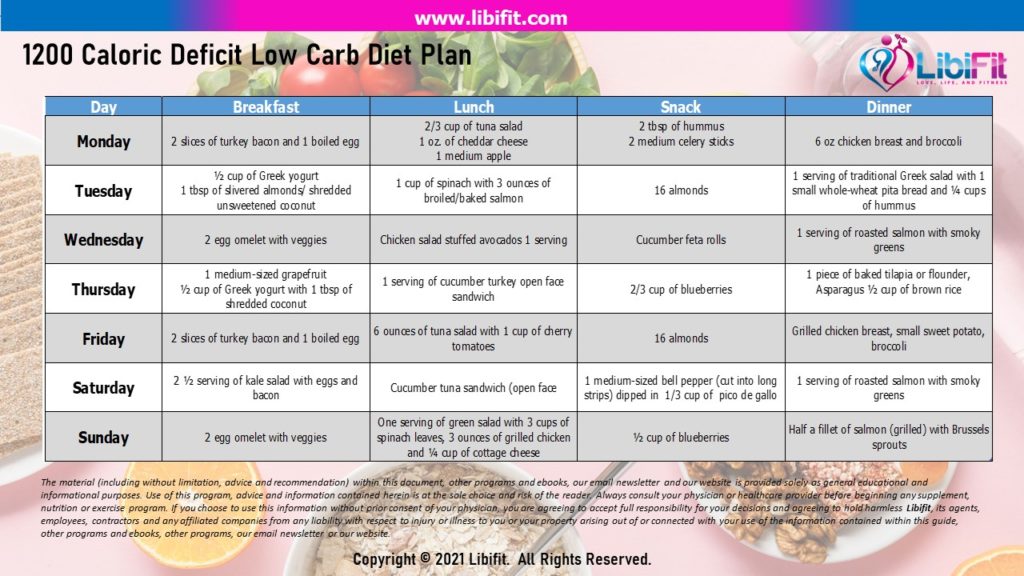
Can You Build Muscle in a Calorie Deficit?
This is another common question that inevitably arises. Some people are concerned that by hitting a calorie deficit, you may also end up with a protein deficit which can make building muscle incredibly difficult. In worst cases, fat loss can also happen alongside muscle loss.
However, the simplest solution to this is to choose your caloric deficit foods wisely. This means factoring in your fitness goals as you come up with a meal plan. Take note that it needs to go together with your exercise routine as well.
That said, if done correctly, your caloric deficit diet will push your body to burn its fat stores for energy while also using it to build muscle mass.
Risks for Eating Too Few Calories
Like with everything else, you must not overdo this approach to dieting. Otherwise, you may end up dealing with:
- Lower Metabolism
- Nutrient Deficiency
- Fatigue
- Weak Bones
- Lower Immunity
To avoid these problems, be sure to follow our suggested meal plans.
Conclusion
At first glance, coming up with a caloric deficit meal plan may seem like a tall order. While a lot of people will claim that they want to start eating healthy eating, they simply have no idea where to begin. Luckily, this article presented a simple calorie meal plan designed to help you lose weight.
So, be sure to follow our suggestions and you should achieve your fitness goals in no time. Want this information at your fingertips? Enter your email address below and receive this 7-day meal plan and easy low calorie meals.

